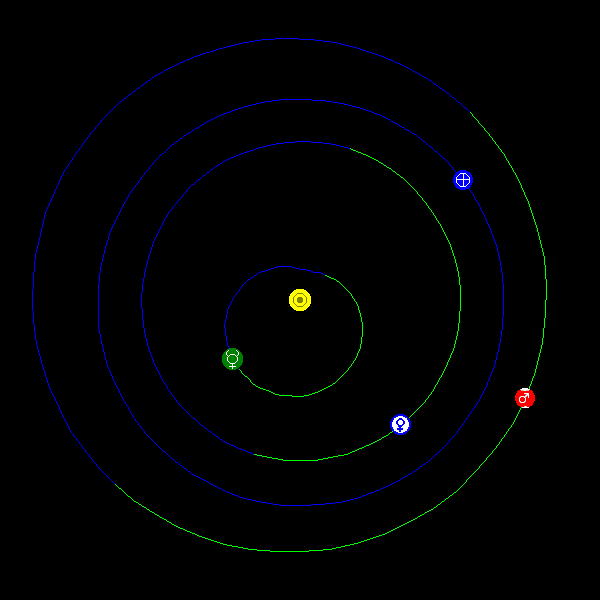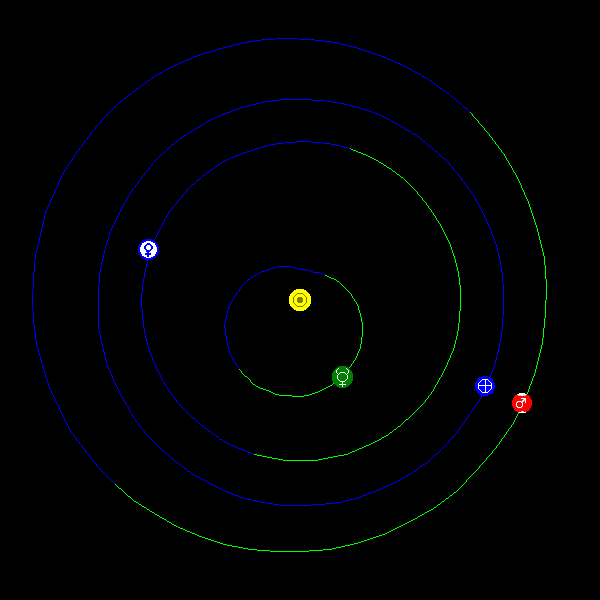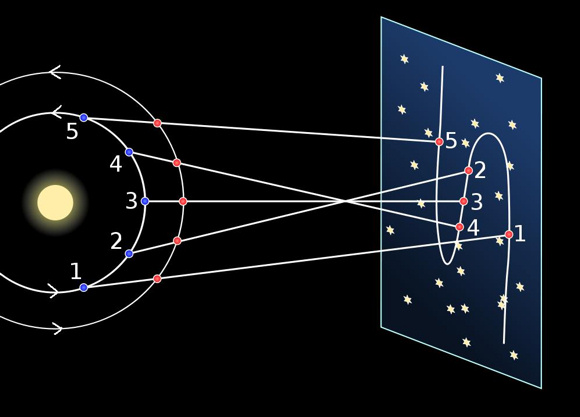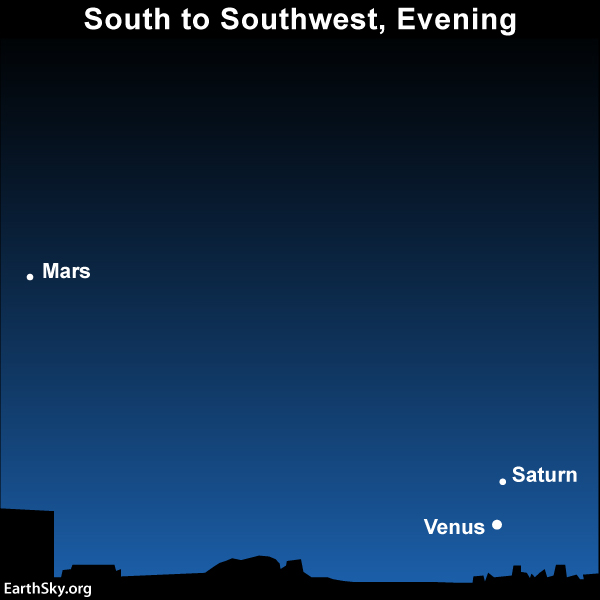The red planet Mars swings to perihelion – its closest point to the sun in its orbit – on October 29, 2016. It’ll only be 1.38 astronomical units (AU) away from the sun on this date. One astronomical unit is the mean Earth-sun distance, or about 93 million miles (150 million km).
Mars’ perihelion is a once-in-two-Earth-years event. Mars came to perihelion last on December 12, 2014. It’ll be at perihelion next on September 16, 2018.
Earth’s orbit around the sun is nearly (but not quite) a circle. Mars’ orbit is more elongated, or – to be more precise – it’s more elliptical. That means Mars distance from the sun varies more than Earth’s does. At aphelion – Mars’ farthest point in its orbit – Mars lodges a whopping 1.67 AU from the sun. So Mars is about 0.29 AU (27 million miles or 43 million km) closer to the sun at perihelion than at aphelion. Mars was last at aphelion on November 20, 2015, and will next reach aphelion on October 7, 2017.
To the eye, the illustration below appears to show the orbits of the planets as looking circular. And they are all circular-ish. But, trust me, they are actually ellipses, like circles that someone sat down on.
This illustration shows the location of planets in the inner solar system in late October 2016 …

At present, Mars is 1.24 AU from Earth. That’s not as close as Mars can be, but it’s relatively close, which is why Mars is easily visible to the unaided eye right now. As viewed from the Northern Hemisphere, Mars is in the southwest as night falls. As viewed from the Southern Hemisphere, it’s more northwest.
The very best time to see Mars in Earth’s sky is during a perihelic opposition. That’s when Earth swings in between the sun and Mars – an event called an opposition by astronomers – close to the time Mars reaches perihelion, its closest point to the sun.
During a perihelic opposition, Mars and Earth are less than 0.38 AU apart, and Mars shines as a dot of reddish flame in our night sky. It’s very stunning to see.
The last time it happened was during the opposition on August 27, 2003. There’s a relatively close perihelic opposition coming in 2018 (but nothing to compare to the 2003 one). The next really close one will be the martian perihelic opposition of August 14, 2050.
2017 EarthSky Lunar Calendar pre-sale…is happening NOW!

The innovative astronomer Copernicus (1473-1543) rationally explained the mysterious brightening of Mars at opposition, and its baffling retrograde motion, that is, its temporary westward motion relative to the backdrop stars.
Copernicus proposed that the answer becomes self-evident by placing the sun at the center of the solar system, and the Earth as the third planet outward from the sun. And of course he was right!
Whenever the Earth passes between the sun and Mars, the fourth planet outward, Mars appears brighter in our sky, because it’s much closer to Earth than at any other time. The “backward” motion of Mars relative to the backdrop stars is due to the Earth in its smaller and faster orbit lapping Mars from the inside track.

Even so, the variance of Mars’ brilliance at opposition was hard to comprehend. How does one explain Mars shining nearly 5 times more brilliantly at a bright opposition than a dim opposition?
In order to better understand Mars’ orbit, the astronomer Tycho Brahe (1546-1601) plotted Mars’ position relative to the backdrop stars with unprecedented accuracy. At one time, astronomers believed planetary orbits were circular, or composed of a combination of circles.
It was Johannes Kepler (1571-1630) who thought outside the circle and who figured out that planetary orbits are ellipses. The sun resides at one of the two foci of an ellipse.
So, on these late October evenings, take a good look at Mars as darkness falls.
Soon, it’ll be fainter and even less noticable.
And, while you’re at it, contemplate the motion of this planet (and all the planets), which had baffled astronomers for thousands of years until Johannes Kepler finally solved the riddle of planetary motion.
Bottom line: Perihelion is just Mars’ closest point to the sun. This is a once-in-2-years event. Plus … how you can still see Mars in the night sky.












